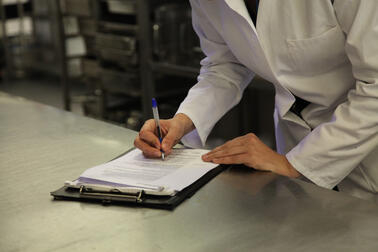
Sushi samples were taken from 59 restaurants and 30 shops that sell self-prepared, unpackaged sushi to customers through self-service or sales services. A total of 177 samples were taken, 118 from restaurants and 59 from shops. In addition, 13 repeat samples were taken due to poor results.
The samples were tested for the total colony count of aerobic micro-organisms, Staphylococcus aureus and Bacillus cereus. Sushi samples that contained fish or shellfish were also tested for Listeria monocytogenes. In addition, all samples underwent a preliminary sensory assessment and acidity testing (pH). When the samples were taken, matters related to the time of production and the management of temperature were also investigated.
80.2% of the sushi samples were of good microbiological quality, 12.4% of passable quality and 7.4% of poor quality. The samples deemed passable are still considered suitable for consumption. The preliminary sensory assessment of the sushi samples discovered nothing remarkable.
The results of the 2023 survey are slightly worse than the results of the 2012 survey. The main cause of the worse results is the total colony count of aerobic micro-organisms.
Bacillus cereus, which causes food poisoning, was the cause of only one poor sample result and Staphylococcus aureus the cause of none. The small amount of Bacillus cereus bacteria indicates that vegetables had been washed carefully and cooling had been successful, and the small amount of Staphylococcus aureus indicates good hand hygiene. Listeria monocytogenes was detected in three samples, but the detected amounts were under 100 cfu (colony forming units that indicate the amount of bacteria) per gram. When the amount is this low, the risk for illness is small.
“Risk groups, like the pregnant and the elderly, should still recognise that sushi may carry listeria,” says food inspector Terhi Juppi from City of Helsinki Environmental Services.
Sushi dishes use many uncooked ingredients, which may be a partial reason for the poor sample results. The hygienic handling and storage of ingredients and the use of fresh ingredients are important for ensuring the quality of sushi. Low temperature and pH level are known to prevent microbial growth in food products. The survey found that the quality of the sushi samples was better when the temperature of the samples was at most 12 degrees Celsius. The sushi samples with the lowest, most acidic pH levels also received slightly better results.


